Cistern Plumbing Services
The toilet cistern is the part of your toilet that holds all of the water. It is also commonly referred to as the tank. There are many different types, but most cisterns directly mount to your toilet bowl unless you have a concealed cistern.
Here at Mr Emergency, we operate 24/7, every day of the year and can even be at your door within 30 minutes* for all your cistern services. It doesn’t matter if it’s a leaking cistern, a cracked flush pipe or a complete cistern replacement, we are here for you.
Our technicians operate locally, and we work with all makes and models. From Caroma’s Luna to Villeroy & Boch toilets, we have you covered.
No job is too big or too small for our team of local experts. Our plumber’s complete ongoing cistern training to ensure they are always up to date with the latest fault-finding techniques and industry developments. If you’ve got an old cistern that needs replacing, we know the latest models. Fixing toilet cisterns is our specialty.
Toilet Cistern Repairs
When your toilet flushes it causes the chain to lift a device called the “flapper”. This allows the tank to fill with water and cascade into the bowl. The cistern also includes a float that drops as water drains and a valve that controls when water is let into the tank. There will also be an overflow tube that drains water from the cistern into the pan if it gets too high.
Our Mr Emergency plumbers are well versed when it comes to toilet plumbing. We supply, repair, replace, service and install all cisterns. Our technicians have the expertise to walk you through your cistern service and provide the best long-term solution.
Problems that can arise with your cistern include:
- Stuck flapper
- A lack of water
- Float valve issue
- Drainage system malfunction
- Broken flush pipe seal
At Mr Emergency, we only use high quality materials. If you need a replacement, we can recommend a new dual flush model that suits your bathroom design.
If you’ve got an old cistern, you’ll enjoy the benefits of a dual flush model. You might want a traditional style or something more contemporary – either way, Mr Emergency has got you covered. From the back inlet to the toilet pan, our reliable plumbers know cistern plumbing completely.
Customer Satisfaction Guarantee
Luckily for you, Mr Emergency plumbers can fix all cistern problems. It doesn’t matter if it’s an emergency or just a general maintenance service. We operate around the clock, 24/7 for your convenience.
If you run into toilet problems and need a repair ASAP, why look anywhere else than Mr Emergency. Our dedicated plumbers are always available to be at your door within 30 minutes* of your call. Customer satisfaction is our guarantee and for an idea of what we hold ourselves accountable to:
- Service at your door in 30 minutes*
- Fully certified and licensed plumbers
- Van stocked with all the right parts
- The best emergency response rate in the business
- 24/7 readiness
- Upfront fixed-price quotes
- Flexible finance options** for approved customers
At Mr Emergency, all our cistern repairs come with a 12-month workmanship guarantee. We also issue certificates of compliance where necessary, which assures you we are operating within government standards and regulations.
Concealed Cisterns
Are concealed cisterns a good idea? It all depends on aesthetics. If you prefer your cistern to be hidden behind a wall then yes, they are a good idea. It can give the bathroom a sleek, impressive look.
A cistern concealed behind a wall can be accessed through the flush button plate for maintenance.
There is no need to worry about having your whole wall ripped apart. Often, these types of cisterns are popular in high rise buildings and public bathrooms. However, in recent times there has been a spike in residential concealed cistern installs.
Mr Emergency technicians are trained to install concealed cisterns and we have a wide selection to choose from. They can assess your property and suggest the best concealed cistern for your needs. No job is too difficult for our team of local experts around Australia.
Finance Options** Available
Here at Mr Emergency, we understand that cistern services are essential and that you don’t always have the funds available to pay for the work immediately.
That’s why Mr Emergency offers a range of convenient finance options** for eligible customers.
Simply choose a plan with one of our providers, HummLoan or Zip. You get the flexibility or weekly, fortnightly or monthly instalments, depending on your choice of provider.
The application process is easy, with the majority of our customers getting accepted straight away. Our plumbers can set you up when at your place and once you’re accepted, they can start work immediately, and you can say goodbye to your toilet problems.
Naturally, you can also pay with cash, cheque, direct transfer or credit card (Visa, Mastercard or American Express).
Getting a qualified plumber to your place for a cistern repair just takes a call to the team at Mr Emergency. Contact us today.















